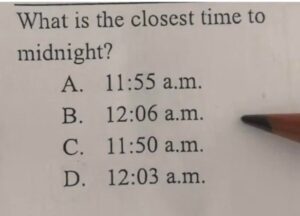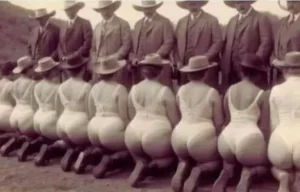Everyone loves a good puzzle now and then, and here’s one that has recently enchanted the internet. Originally meant for kids, this tricky math question has caught the attention of people of all ages and led to a lively discussion online. First posted on Reddit, this brain teaser has rekindled our love for solving perplexing questions.Read More
The Conundrum That Captivated the World
Back in June 2023, a Reddit user from Jamaica, going by the name @yawdmontweet, posted a question that left others scratching their heads: “What is the closest time to midnight?” It sounded simple enough, with four options to choose from: A. 11:55 a.m., B. 12:06 a.m., C. 11:50 a.m., and D. 12:03 a.m.
This question quickly gained popularity, reaching over 1.4 million views and generating loads of comments from people with various thoughts and answers. The phrase “closest time to” sparked creative thinking, leaving room for different viewpoints.

Debating Interpretations and Seeking Solutions
As more people joined the discussion, the general agreement leaned towards option “D”. Many believed 12:03 a.m. was the closest to midnight, whether looking forward or backward in time.
However, not everyone agreed. Some pointed out that the phrasing “closest time to” versus “closest time until” could change the meaning entirely. Those supporting option “A” argued that it was nearest to the next midnight.
Additionally, some participants looked at the problem creatively by considering how the word “midnight” appeared among the options. This led some to favor option “A”, associating it more closely with the term itself.
The Role of AI in Solving the Puzzle
In the midst of these debates, some turned to artificial intelligence for help. The chatbot ChatGPT weighed in, saying straightforwardly, “The closest time to midnight would be D. 12:03 a.m.”
With so much discussion, one commenter noted the confusion such questions might cause for kids. They pointed out that the various interpretations—whether considering times until the next midnight or simple minutes forward or backward—could be frustrating and lead to a lack of interest in math for young learners.
So, which option would you choose? Do you think there’s room for more than one correct answer based on different interpretations?



